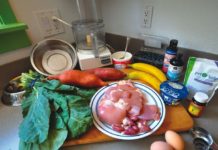Complete and Balanced Dog Food
Raw Dog Food and Salmonella Risks
5 Reasons NOT to Free-Feed Your Dog
2016 Approved Dry Dog Foods: Whole Dog Journal’s Annual Ratings
Approved Dry Dog Food List: 2016
2015 Approved Canned Dog Foods: Whole Dog Journal’s Annual Ratings
Behind Our Ratings: Whole Dog Journal’s 2015 Approved Canned Dog Foods
Find Proper Dog Food Nutrition and Diet Solutions
When WDJ first reviewed dog food, back in 1998, there was but a handful of companies making what we considered good foods. Seriously, I stretched to find five companies that had products that contained only good-quality ingredients - and more importantly, didn't contain unnamed animal fats and meat by-products. And just about every question I asked a pet food company was answered with, "I'm sorry that's proprietary information!"












